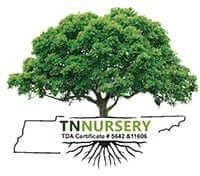Plants Not Thriving?
Share
Plants Not Thriving? Identify Pest, Disease, and Environmental Issues
Spring gardening is always a delight. Whether you're potting up fresh plants, experimenting with new ideas in the garden, a master gardener, or a newbie, we can all agree on the excitement we feel watching our new plants grow. But as the season shifts into summer and the garden matures, you might start to notice that some of those once-vibrant spring plants are beginning to struggle.
Plants are living beings, so they can have health issues just like us. But the trouble for gardeners is that many plant issues can look remarkably similar, making them difficult to diagnose. That is, until you learn to spot the key signs that set them apart. In this guide, we’ll help you recognize the most common plant ailments and walk you through how to bring your plants back to health.
Pest Activity
Bugs are out and about during the summer, and the good news is they are generally easy to spot. Here are a few of the most common garden pests and the signs of their presence:
· Aphids: Tiny green, black, white, or brown insects that squish easily. Look for sticky residue on leaves, known as ‘honeydew’. These bugs suck sap on new growth, causing curling or yellowing.
· Spider Mites: Microscopic black bugs, most easily spotted by their prominent webbing along leaves. As they feed on foliage, it causes speckled or stippled leaves. Eventually, leaves turn yellow.
· Cabbage Worms: Often seen in their mature moth form as white “butterflies”, these sneaky buggers begin as caterpillars that relentlessly tear up leafy greens. Large, irregular holes will be spotted, and worms may be found underneath the leaves’ surface.
· Slugs & Snails: Look for slimy trails along foliage. Slugs famously go for plants like Hostas. They will tear large, ragged holes and damage the overall appearance of the plant.
Luckily, for almost any common garden pest, there are some easy solutions that work very well. Try a natural pest control method, like neem oil or insecticidal soap. Always physically remove pests either with your hands, or by vigorously spraying foliage with water (but be gentle with new growth!).
If your garden is regularly attacked by pests, it may be a good idea to opt for plants that have natural pest-resistance, such as Yarrow. Yarrow gives off a fragrance (and taste) that bugs do not prefer and will actively avoid.
No matter the current level of pest activity in your garden, it is always important to regularly monitor for any changes. Check the undersides of leaves, watch for color changes, and be sure to remove any invading insects right away.
Watering Issues
While all plants need water, too much (or too little!) of a good thing can be really harmful to the overall health of the plant.
· Overwatering: Too much water will result in yellowing leaves, especially on the lower half of the plant. If the soil is saturated and the plant is consistently wilting, this is also a good sign to dial back the water. Overwatering can also attract pests and fungus, so watch for fungus gnats as a sure sign that the plant is getting too much moisture. In severe cases, overwatering can result in root rot, ultimately killing off the entire plant. If your garden is on the wetter side, opt for plants that tolerate and prefer high moisture, such as Maidenhair Fern.
· Underwatering: Wilting with dry soil is the most common sign, but sometimes dehydration can be sneaky in plants. Watch for delayed or slowed growth, as plants rely on water for nutrient uptake. Leaves may also appear shriveled or visibly ‘crispy’. If the garden is situated in an area prone to drought conditions, consider plants tolerant of dry soil such as Brown Eyed Susan.
Always check the soil moisture before watering. It is best to water deeply, and less frequently. With container planting, always ensure proper drainage holes exist. To prevent underwatering, apply mulch around the base of plants to lock in moisture during dry spells.
Sunlight Issues
All plants have a specific level of sunlight that they need, and too much or too little can quickly cause issues.
· Too much: Look out for leaf scorch, characterized by brown or crisped leaves. Plants may droop in the middle of the day (when unrelated to watering) due to the stress of the sun.
· Too little: Plants will appear ‘leggy’ as they struggle to reach up towards the sun. Leaves will appear pale, and flowering will be either stunted or halted altogether. To avoid this problem all together, there are plants that can tolerate both high levels light and shade equally well, an example being Hydrangeas.
Plant Disease
While plant disease (fungal, bacterial, or viral) tends to be rare, it is a huge cause for concern when present. If you notice any of the following symptoms, it is necessary to remove the infected plant parts immediately. In more severe cases, you will need to remove the whole plant to prevent spread.
Common symptoms:
· Spots on leaves, either yellow, brown or black (possibly viral or bacterial)
· Powdery white substance (fungal)
· Wilting in moist soil
· Deformed new growth
To help prevent disease from taking over your garden, avoid overhead watering to allow for proper airflow on leaves.
Always Act Quickly
Whatever the reason your plant isn’t thriving, the best way to stop small problems from becoming big ones is by catching them early and acting quickly. Try to check in on your garden often — even just a few minutes a day can make a big difference. And don’t underestimate the power of a simple garden journal. Jotting down notes when something looks off (or when something works really well!) can help you spot patterns over time and take the guesswork out of future issues. Think of it as getting to know your plants better, one observation at a time.
